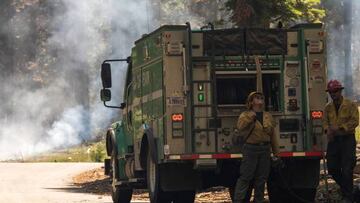Heat wave: which parts of the country are under alert and where will the maximum temperatures be registered?
The US and much of the world is facing huge temperatures this July with many counties issuing alerts for extreme heat


The excessive heat that is pummeling the southern US has led to multiple warnings in a dozen states to keep safe. Those living in areas with heat advisories and warnings should make sure they are drinking enough water, stay in a room with cool air or air-conditioning, where light cloths, and stay out of the sun.
One-third of the population was under heat-related weather warnings on Tuesday and Wednesday, with temperatures expected to climb north of 43 degrees Celsius (110 degrees Fahrenheit) in the Plains states.
This heat is due to a strong dome of high pressure over the Southern Plains and Mississippi Valley. Instead of heat being brought further south, the pressure is keeping the heat in place, pumping up temperatures.
Related stories:
It is not not only the US being affected by the extreme heat. Europeans are also taking a battering under the oppressive sun. The UK saw its hottest day of all time on Monday of 40.3 degrees celsius (104.54 degrees Fahrenheit) as well as the busiest day for the London fire brigade since German bombing in the second world war.
Which parts of the US are under alert?
The majority of the excessive heat alerts are in the states of Texas, Oklahoma, Louisiana, Mississippi, Tennessee, and Arkansas.
For Arkansas, the entirety of the state is under a heat warning or heat advisory. Temperatures are expected to exceed 100 degrees fahrenheit for multiple days. The current temperature record of 114 degrees, set in 2011 in Little Rock county, is also likely to be broken.
“This compounding effect can increase the heat risk for those most vulnerable,” Michael Bowlan, a meteorologist with the National Weather Service said. “With the prolonged extreme heat and lack of rainfall, drought conditions are also intensifying and expected to worsen through the end of July.
A full list of the counties with heat warnings can be found on the National Weather Service website.
Where will maximum temperatures be seen?
Related stories
With extended heat for such a length of time, there is a high chance records will be broken.
People keep telling me that because the UK had a heatwave in 1976, climate change is overhyped.
— Will Norman (@willnorman) July 17, 2022
So here’s the global heat anomaly maps from June 1976 and June 2022. https://t.co/GGVg46UTcI pic.twitter.com/tngiGoEEUl
However, until the data is released, it is not yet sure which states will see records.

